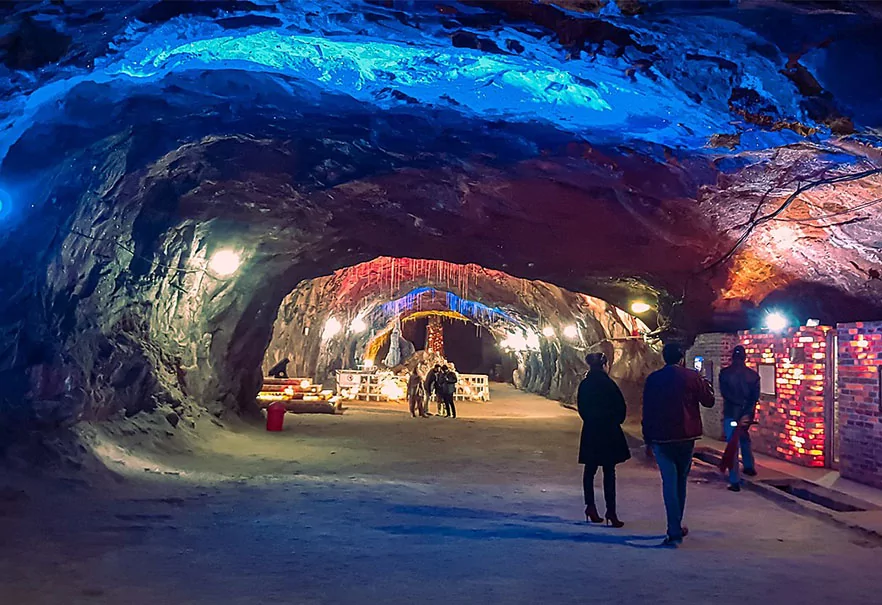Image: Khewra Salt Mines: Shahzaib Damn Cruze, CC BY-SA 4.0, via Wikimedia Commons
With Himalayan salt lamps rising in popularity, it becomes increasingly important to set the record straight regarding the rumored health benefits. These stunning, pink salt lamps make for tasteful decor – but besides beauty, what else do they bring to the table?
Humble Beginnings
An authentic salt lamp’s journey starts in the Khewra salt mine in Pakistan, the world’s second-largest salt mine. The Khewra salt mine was originally discovered by Alexander the Great, who noticed his horses had started to lick the crystalline formations within the mine. Upon closer inspection, he realized the beautiful, rose-hued crystals were made of salt!
These crystals formed over thousands of years, taking on a pink hue as various minerals accumulated within them. There are actually 84 other elements that can be present in these rocks, although in trace amounts.
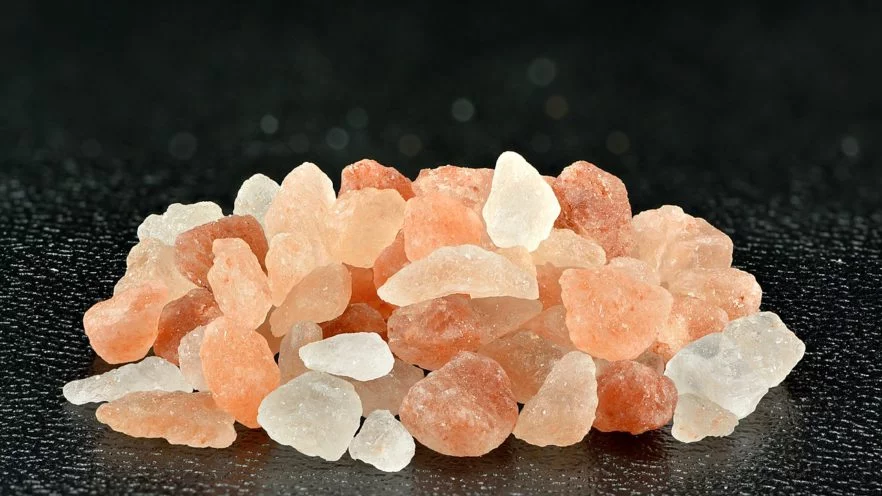
Before the stunning minerals in the Khewra mine were made into lamps, they were used to make a distinct variety of table salt. To this day, much of the Himalayan salt carved out of the mine is turned into your everyday dinner seasoning. You may have even seen Himalayan salt at your local grocery store. If you’ve ever used it to season a dish, you’ll know it tastes wonderful.
How They Work
After salt deposits are mined and broken down into large chunks, the individual salt rocks are hollowed out in the center and carved into the desired shape. Through the hollow center, a functioning light bulb is inserted and then attached to the lamp’s base. Because the salt is somewhat translucent, the bulb shines through the crystal, leaving behind a beautiful beam of pink light.
Although the original intention for these lamps was simply to create atmosphere, since then they have gained popularity within the New Age community. Some individuals purchase these lamps because they believe that they possess unique healing qualities, despite a lack of evidence to support this theory.
Believed Health Benefits
For years, people have attributed certain qualities to Himalayan salt lamps, even though science isn’t there. Some benefits people have claimed to have seen include improvements in sleep, mood, and even air quality.
Negative Ions
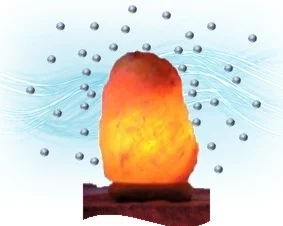
New Age enthusiasts say that Himalayan salt lamps produce negative ions when the heat from the light bulb within them forms droplets of salt-infused concentration which evaporate into the air. Negative ions are widely believed to be responsible for the health benefits of Himalayan salt lamps even though there is no real evidence that this is true, or that they release ions at all.
The truth is pseudoscience sells and capitalizes on the fear of its consumers. By convincing consumers that they need negative ions, companies can sell products that allegedly “fix” the problem. Many companies will even conduct their own “studies” and inspections and report biased results, using scientific terminology to sound genuine.
Improved Air Quality
One false belief about these salt lamps is that they improve the energy of the air around them through those negative ions. However, that just isn’t the case. The idea that negative ions purify air was actually disproved in 2016.
This belief stems from the idea that the negative ions allegedly flush out bad energy or other imperfections in the air around us. Even if the claims about negative ions were true, it would do the opposite for nearby air quality, as negative ions can form ozone.
If you’ve ever stepped outside during a thunderstorm and felt that charge in the air, that’s a larger example of this idea in effect. Even so, it’s still not proven that the lamps produce ions, making this hypothesis a myth.
Improved Mood

Many people claim that having a Himalayan salt lamp nearby can improve overall mood and even boost serotonin levels – yet another pseudoscientific claim with no basis. Himalayan salt lamps do not emit ions of any kind, although they certainly are beautiful.
Scientists have found that negative ions do improve mood overall, but the lamps aren’t producing them, making this information essentially irrelevant.
Individuals with SAD (Seasonal Affective Disorder), however, might reap some benefits from having a light source nearby, as additional lighting has been shown to help alleviate seasonal depression. However, nothing says that the light source must be a Himalayan salt lamp.
Improved Sleep

Lastly, people often claim that Himalayan salt lamps improve their sleep quality. Overall, it’s very difficult to determine which specific factors influence a person’s sleep. Many individuals have sleep disorders or specific nighttime routines that bring extra factors into play. For example, someone might believe the salt lamp is improving their sleep, but it’s just the simple act of having a night light.
The theory that Himalayan salt lamps release ions that aid sleep was disproven in a 2013 study. Additionally, it’s not recommended by doctors to keep a Himalayan salt lamp on close to bedtime, as certain light levels have been shown to decrease melatonin production.
Finding Your Own
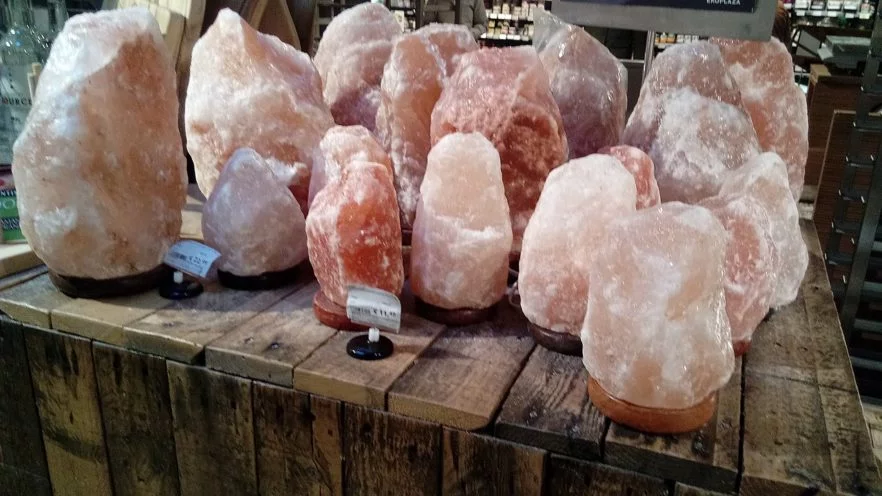
Himalayan salt lamps were highly popular during the 1980s, although more for their aesthetics than anything else. The warm, rosy glow of a salt lamp really adds something beautiful to the atmosphere of any room, so their popularity is unsurprising.
When you’re looking to purchase a Himalayan salt lamp, the quality of the mineral itself should be your number one priority. There are a few ways you can determine the exact quality of your lamp. One thing to look for is a darker, more saturated pink color. The pinker the lamp is, the higher quality it is as well.
If you have a Himalayan salt lamp in your home, make sure it’s protected from direct sunlight and heat, which can both damage the mineral itself and pose a potential fire hazard. Several styles of salt lamps made by the company Lumière were recalled in 2018 for this very reason.
Authenticity Matters
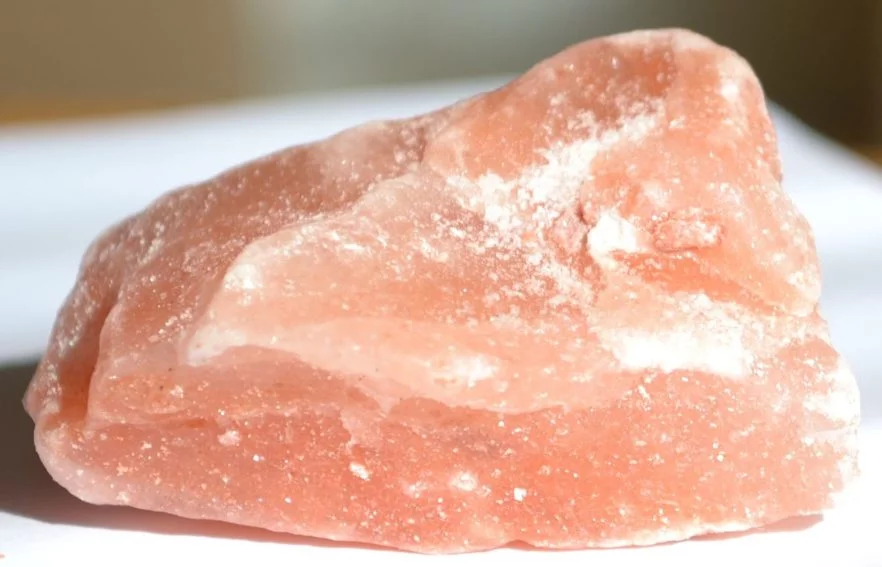
Authentic Himalayan salt lamps are sourced exclusively from the Khewra mine, so if a company is vague about its mineral sourcing, has an unusual return policy, or uses intentionally broad language, they are likely selling you a fake. Fake salt lamps are less pink with fewer imperfections and can pose a bigger threat of catching fire when used.
Always check your salt lamp for cracks or breakages. If moisture becomes trapped inside the mineral, your lamp could potentially explode due to overheating and trapped gasses. This is another great reason to purchase an authentic lamp.
The Bottom Line
The truth is that Himalayan salt lamps are nothing more than beautiful, natural decor. There’s something special about owning a mineral that’s thousands of years old and sourced from deep within the Earth, but it has nothing to do with any supposed health benefits of the lamp.
Until more research has been conducted to determine the legitimacy of these lamps’ alleged healing properties, it’s important to separate fact from fiction. Although many people swear by these lamps, it’s ultimately just a lovely centerpiece with a warm glow.
If you do choose to purchase your own Himalayan salt lamp, do so for their unmatched natural beauty, rather than any purported healing qualities.
In Post Image 2 Credit: Paolopep, CC BY-SA 3.0, via Wikimedia Commons
Additional Resources:
- “I Got a Rock” – https://sites.psu.edu/siowfa16/2016/09/09/i-got-a-rock/
- “Reasons To Have A Himalayan Salt Lamp In Every Room Of Your Home” – https://www.academia.edu/34920733/Reasons_To_Have_A_Himalayan_Salt_Lamp_In_Every_Room_Of_Your_Home
- “Flowerchild” – https://publish.illinois.edu/flowerchild/2019/04/
- “Managing Mental Health with Light Therapy” – https://www.umassmed.edu/TransitionsACR/youth-voice/ya-blog-corner2/Managing-Mental-Health-with-Light-Therapy/
- “Himalayan Salt Block” – https://wiki.alquds.edu/?query=Himalayan_salt_block
